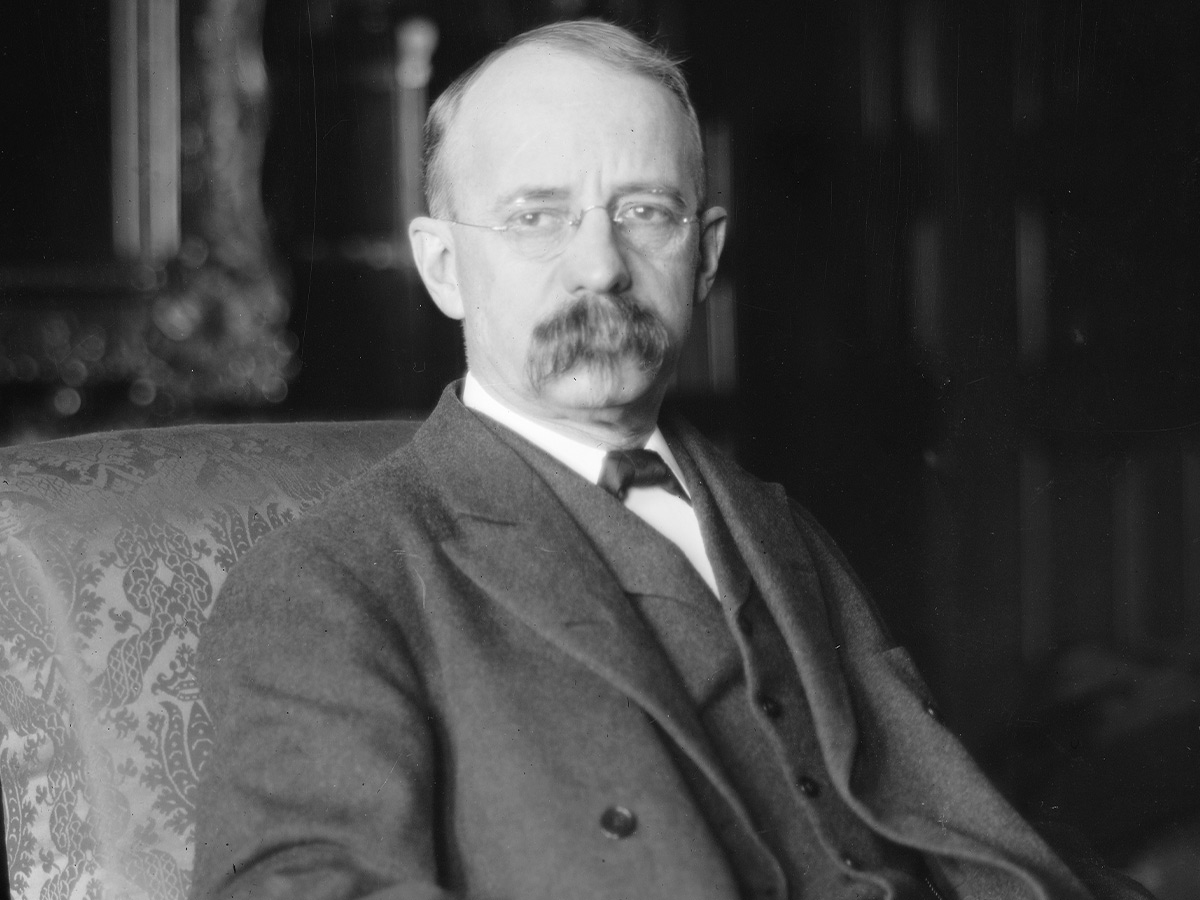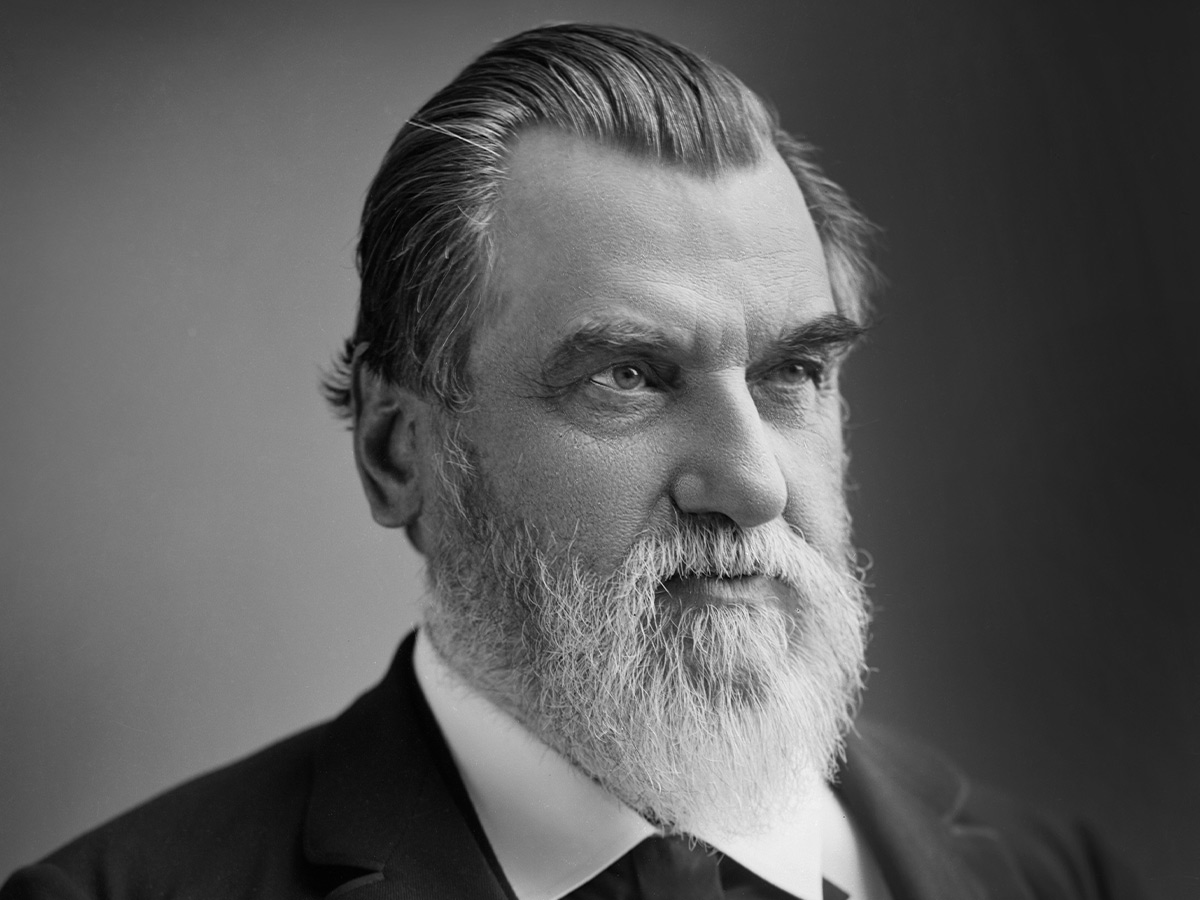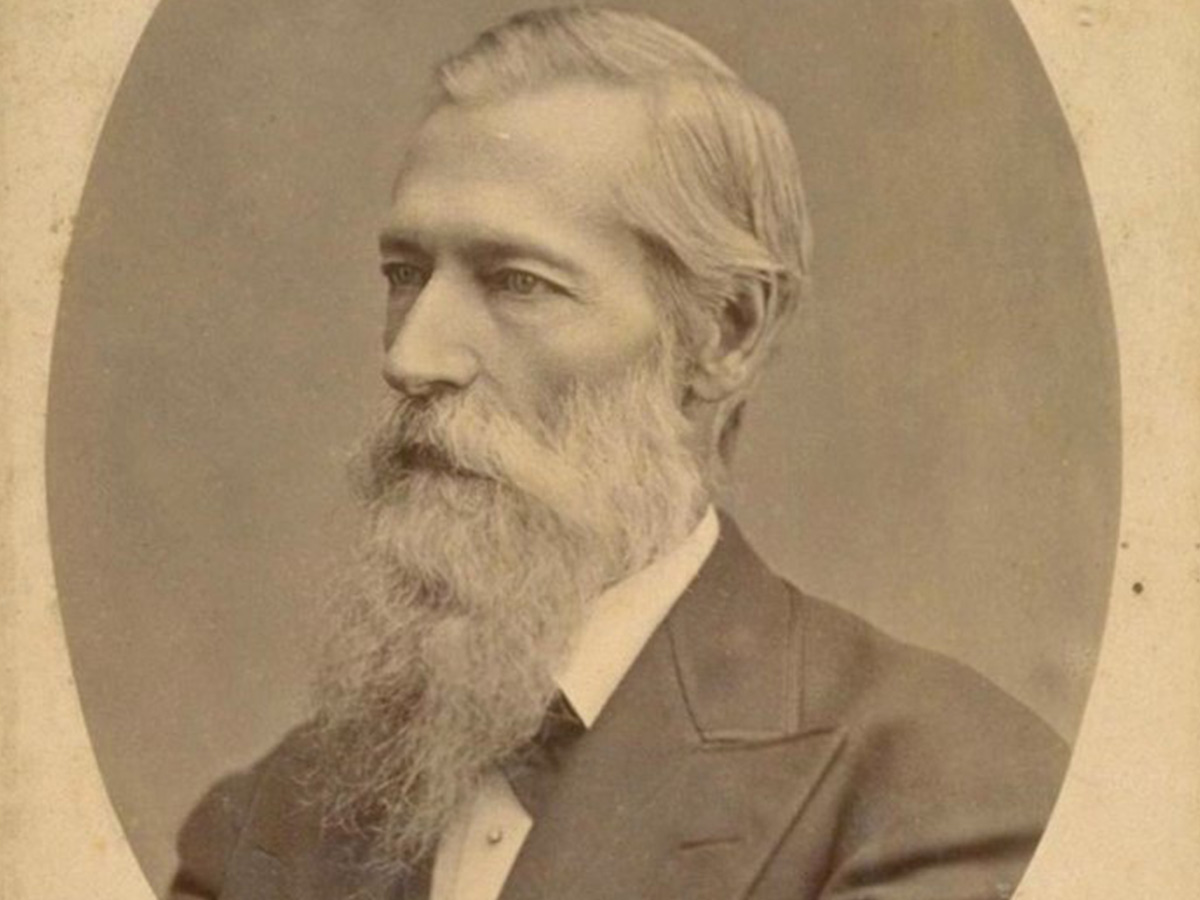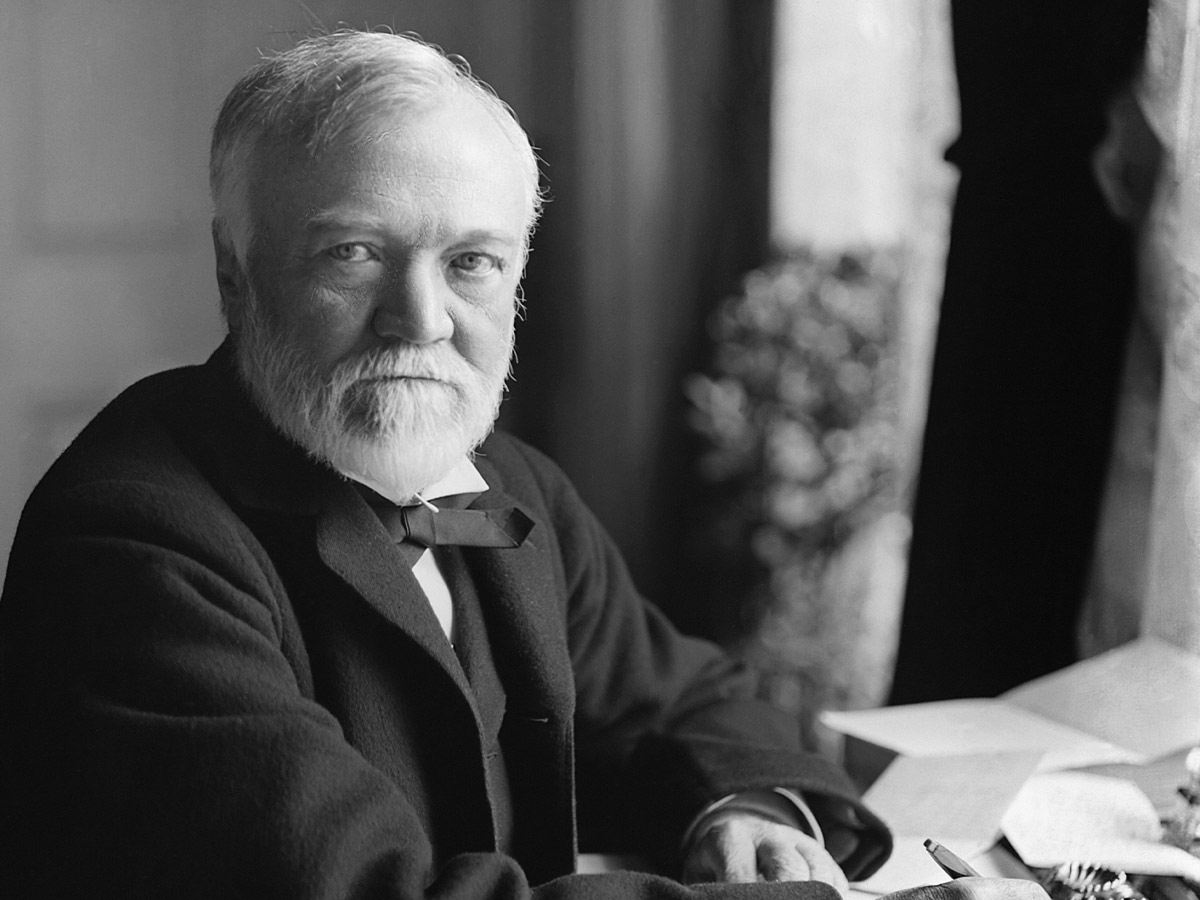Cornelius Vanderbilt

Cornelius Vanderbilt, the "Commodore," rose from humble beginnings to become one of America's wealthiest individuals. Initially building his empire through steamships, Vanderbilt shifted focus to railroads in the 1860s. He consolidated smaller lines to create the New York Central Railroad, a powerful transportation network.
Vanderbilt's ruthless business tactics allowed him to dominate the industry, often engaging in rate wars to crush competitors. His influence extended beyond transportation, as he played a significant role in shaping America's industrial landscape. Vanderbilt's legacy includes not only his vast fortune but also his philanthropic efforts, most notably the founding of Vanderbilt University in Nashville, Tennessee.
Jay Gould

Jay Gould, a controversial figure in American business history, earned a reputation as the "Mephistopheles of Wall Street" due to his manipulative tactics. Starting as a surveyor, Gould quickly moved into finance and railroads. He gained notoriety for his role in the Erie War, battling Cornelius Vanderbilt for control of the Erie Railroad.
Gould's business practices often involved stock manipulation, hostile takeovers, and political bribery. Despite public criticism, he amassed a vast fortune controlling several major railroads, including the Union Pacific and Missouri Pacific. Gould's legacy is complex, with some viewing him as a brilliant strategist and others as a symbol of Gilded Age excess and corruption.
J.P. Morgan

J.P. Morgan, a towering figure in American finance, played a crucial role in shaping the nation's railroad industry. As a banker and investor, Morgan specialized in reorganizing and consolidating railroads, often stepping in during financial crises. His most significant railroad achievement was the creation of the Northern Securities Company, a holding company that consolidated several major western railroads.
Though later dissolved due to antitrust laws, it demonstrated Morgan's immense influence. Beyond railroads, Morgan's power extended to various industries, and he famously bailed out the U.S. government during the Panic of 1893. His legacy includes founding the banking giant J.P. Morgan & Co. and amassing an impressive art collection.
James J. Hill

James J. Hill, known as the "Empire Builder," was a visionary railroad tycoon who played a pivotal role in developing the American Northwest. Starting as a shipping clerk, Hill eventually gained control of the St. Paul and Pacific Railroad, transforming it into the Great Northern Railway. Unlike many of his contemporaries, Hill built his railroad without significant land grants or government subsidies.
Hill focused on developing the regions his railroad served, encouraging settlement and agricultural development. Hill's business strategy emphasized efficiency and cost-cutting measures, making the Great Northern one of the most profitable railroads of its time. His influence extended beyond railroads to banking, agriculture, and timber industries in the Northwest.
E.H. Harriman

Edward Henry Harriman rose from a Wall Street clerk to become one of the most powerful railroad executives in American history. Known for his aggressive business tactics and financial knowledge, Harriman gained control of the Union Pacific Railroad in 1898, rescuing it from bankruptcy. He invested heavily in improving the line's infrastructure and efficiency.
Harriman went on to control several other major railroads, including the Southern Pacific, creating a vast transportation network. His rivalry with James J. Hill for control of the Northern Pacific led to the Northern Securities case, a landmark antitrust decision. Despite criticism for his monopolistic practices, Harriman was renowned for his managerial skills and commitment to modernizing America's railroad system.
Collis P. Huntington

Collis Potter Huntington, one of the "Big Four" railroad barons, played a crucial role in building the Central Pacific Railroad and completing the First Transcontinental Railroad, as well as developing the Chesapeake & Ohio Railway, connecting the Midwest to the Atlantic coast.
Starting as a hardware merchant during the California Gold Rush, Huntington partnered with Leland Stanford, Mark Hopkins, and Charles Crocker to form the Central Pacific. Huntington was known for his lobbying skills, securing favorable legislation and financing for the railroad. After completing the transcontinental line, Huntington continued to expand his railroad empire, gaining control of the Southern Pacific and creating a transportation network that dominated California.
Leland Stanford

Leland Stanford, also a member of the "Big Four," was a multifaceted figure in American history. As president of the Central Pacific Railroad, he played a key role in constructing the western portion of the First Transcontinental Railroad. Stanford's influence extended beyond railroads; he served as Governor of California and later as a U.S. Senator.
Despite controversies surrounding his business practices, including allegations of corruption and exploitation of Chinese laborers, Stanford is perhaps best remembered for his philanthropic efforts. Following the death of his only son, he and his wife founded Stanford University in 1885, using their considerable wealth to create one of the world's leading educational institutions.
Mark Hopkins Jr.

Mark Hopkins Jr., often referred to as "the quiet one" among the "Big Four," played a crucial role in the construction of the Central Pacific Railroad. Starting as a hardware merchant in Sacramento with Collis Huntington, Hopkins became the treasurer of the Central Pacific, managing the company's finances during the challenging construction of the transcontinental railroad.
Known for his frugal nature and attention to detail, Hopkins was instrumental in keeping the project financially viable. Unlike his more flashy partners, Hopkins preferred to work behind the scenes, earning a reputation for honesty and prudent financial management. His Victorian mansion on Nob Hill in San Francisco became an iconic symbol of the wealth generated by the railroad industry.
Charles Crocker

Charles Crocker, the final member of the "Big Four" railroad barons, was instrumental in the construction of the Central Pacific Railroad. Initially a dry goods merchant, Crocker took charge of the actual construction of the railroad, overseeing the monumental task of building tracks across the Sierra Nevada mountains. He was known for his innovative use of Chinese immigrant labor, a controversial decision that significantly accelerated construction but also led to exploitation.
Crocker's two-story tall “Spite Fence" in San Francisco, built to block his neighbor's view, became a symbol of his wealth and pettiness. After completing the transcontinental railroad, Crocker continued to be involved in railroad development and became a major shareholder in Wells Fargo Bank.
William Vanderbilt

William Henry Vanderbilt, son of Cornelius Vanderbilt, inherited and expanded his father's vast railroad empire. Initially considered by his father as unfit for business, William proved his worth by successfully managing the family's Staten Island Railway. Upon inheriting the New York Central Railroad, he doubled the empire's value in just six years.
William was known for his more diplomatic approach to business compared to his father's aggressive tactics. He famously uttered the controversial phrase "The public be damned" in response to a question about public interest in railroads, though he later claimed to be misquoted. William's tenure saw significant expansion and consolidation of the Vanderbilt railroad interests.
Andrew Carnegie

While primarily known for his steel empire, Andrew Carnegie played a significant role in the railroad industry, which was closely intertwined with steel production. Carnegie's first major investment was in the iron and steel industry, supplying rails to the expanding railroad network. He pioneered vertical integration, controlling every aspect of production, from raw materials to finished products.
Carnegie's steel company became the primary supplier of rails to the railroad industry, contributing significantly to the rapid expansion of America's rail network. His business savvy and innovative practices revolutionized both the steel and railroad industries. Later in life, Carnegie became one of history's greatest philanthropists, funding libraries, educational institutions, and scientific research.
Russell Sage

Russell Sage was a financier and railroad developer who played a significant role in America's expanding rail network during the Gilded Age. Starting as a grocer, Sage moved into finance and became a major player on Wall Street. He was known for his conservative investment strategies and for pioneering the use of "puts" and "calls" in stock trading.
In the railroad industry, Sage was a major investor and director in several lines, including the Milwaukee & St. Paul and the Manhattan Elevated Railroad. He often worked closely with Jay Gould in various railroad ventures. Sage was notorious for his frugality despite his immense wealth.
 Author
James Stephens
Last Updated: December 06, 2025
Author
James Stephens
Last Updated: December 06, 2025